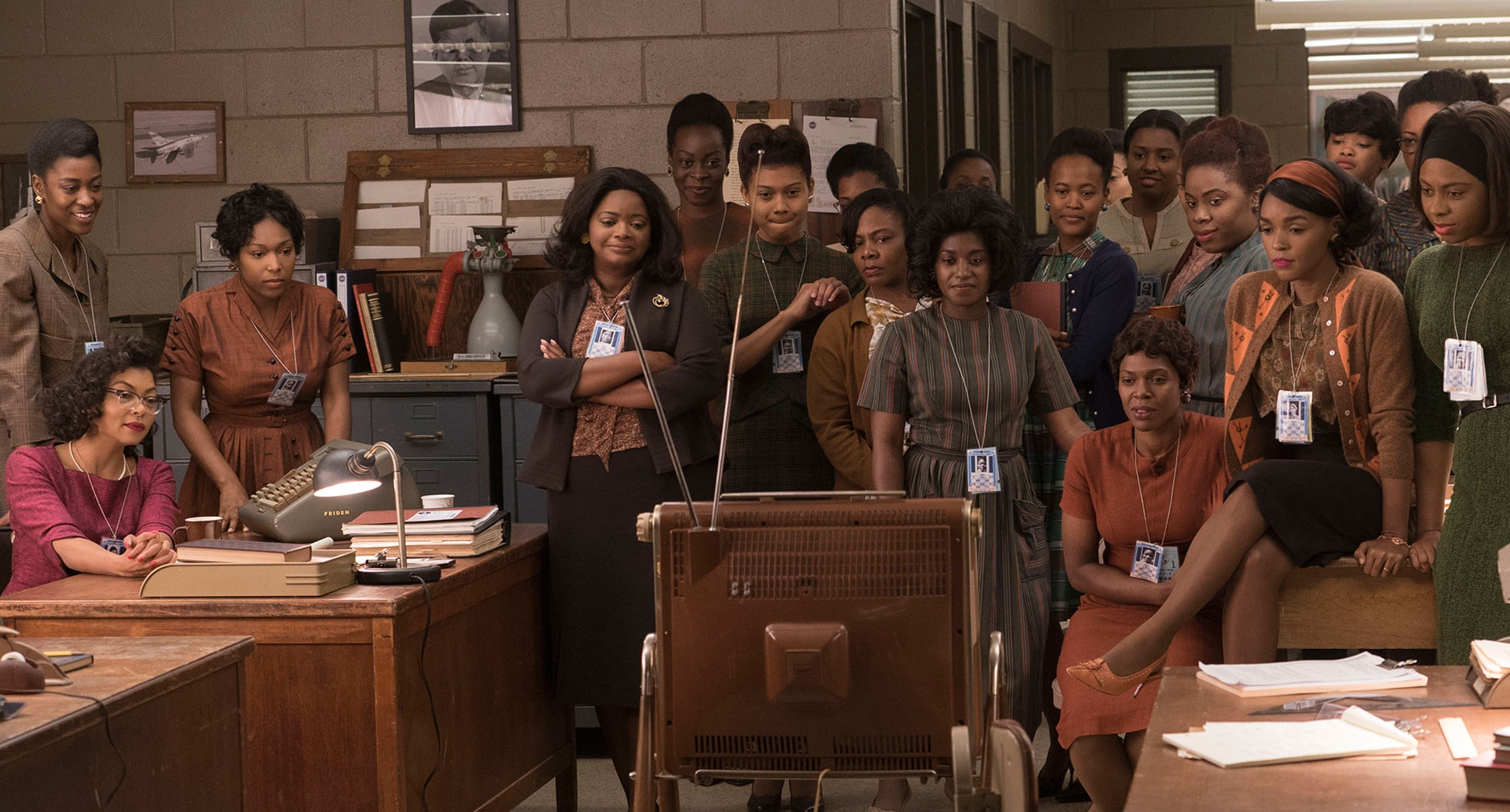Hidden Figures boasts a fantastic story. While I enjoy a great story about overcoming the odds playing a sport, Hidden Figures posits a more realistic, possible way to get ahead for oppressed minorities: using your brain. I hope movies like this make Katherine Johnson, Dorothy Vaughan, and Mary Jackson more common household names, and can inspire some young girl who’s really good at math or science to see in those three a dream that can become a reality. Those 3 amazing, African-American women helped the world touch the stars!
Hidden Figures is about some of the behind the scenes work that went into propelling NASA into space to compete with the Russians. 3 African American women played prominent roles in the success of America’s space program. Mary Jackson (Janelle Monae) became the first female African-American engineer, factoring in heavily in how heat shields were assembled for the ships. Dorothy Vaughan (Octavia Spencer) managed the Colored division of human computers without being paid for her work, and became a pioneer in Fortran and early computing machines because she adeptly saw the future in spite of cold cooperation from her boss Vivian (Kirsten Dunst). And finally, Katherine Johnson (Taraji P. Henson), as one of Dorothy’s computers, became one of the strongest consultants on flight trajectory for orbiting the Earth. Katherine, like her peers, also faced cold collaboration from lead engineer Paul Stafford (Jim Parsons), but also drew a sympathetic eye from Al Harrison (Kevin Costner), NASA’s project manager for the rocket who sees past Katherine’s color and sees her talent at postulating and calculating flight trajectory.
Hidden Figures reminds me heavily of October Sky. These women “don’t wear skirts, they wear glasses” as one of them rightly pointed out. Using their God given gifts, these women apply them twice as much as their WASPy counterparts. The story mostly focuses on Katherine and how she uses her analytical brain to outperform her male counterparts. However, the equally interesting story is how Dorothy and Mary use their smarts to power past institutional barriers to their advancement. Mary beautifully researches her judge’s history and uses it to help him tilt toward approving her attendance at night school at an all white high school, and Dorothy knows making her group needed is a priority, and since computing machines are the future, it is important that she and her girls know how to use and upkeep them. Hidden Figures shows how much agency these women have, and how lucky the United States was to have them around when we needed them.
The side stories around Hidden Figures reek of Oscar touch ups. It’s amazing to know that Katherine did this while also raising 3 kids, but giving her a beautiful love interest (don’t worry Mahershala Ali, you still had a good year) doesn’t make me care more for her success: she’s compelling enough on her own. Poor Jim Parsons and Kirsten Dunst are relegated to stand-in white asshole acting, when there were opportunities to shade them (Parsons could have hated Katherine via hubris not race). The outside riots and such are mentioned, but nothing really comes of it because it doesn’t fit into this story except on a personal level. In addition, each of the 3 leads gets some big Oscar moment, which clangs heavily with the way these women carry themselves. I wish the writers trusted their strong story to cut 15 minutes or so and a few lines from Hidden Figures, and just focused on the little interactions between the 3 women and small insights into their personal lives instead of full fleged subplots.
Hidden Figures is as big of a crowd pleaser as La La Land. As a STEM student myself, I know the importance of learning these skills and how they can help make the world a better place. I also know that these jobs are better when the best collaborate, regardless of their background, race, gender, etc. Hidden Figures is a strong reminder of how education can empower anyone to do great things. Yay science!

